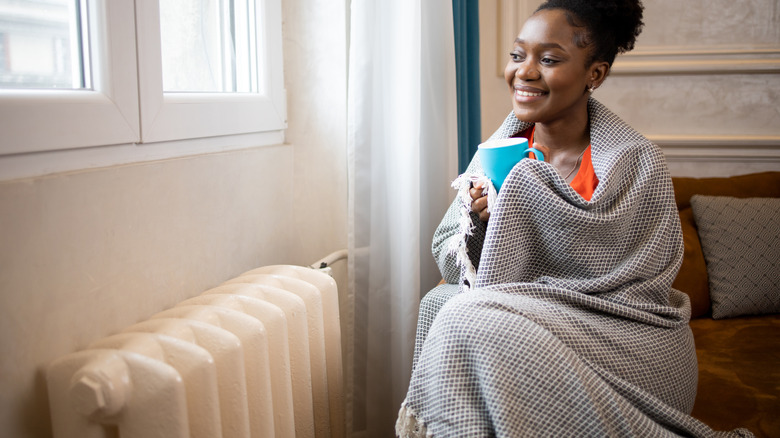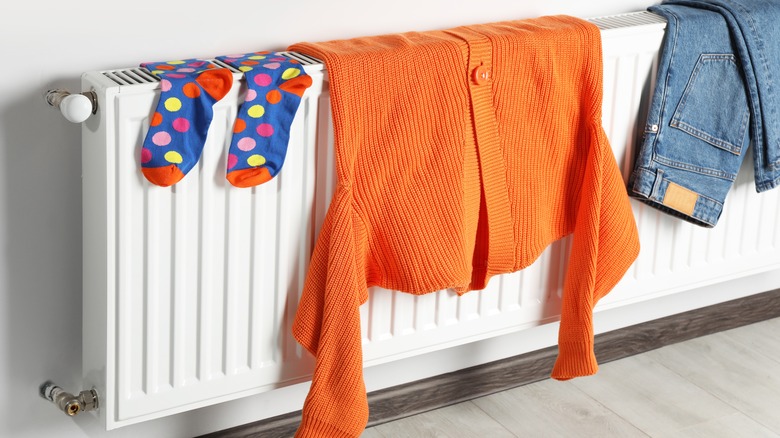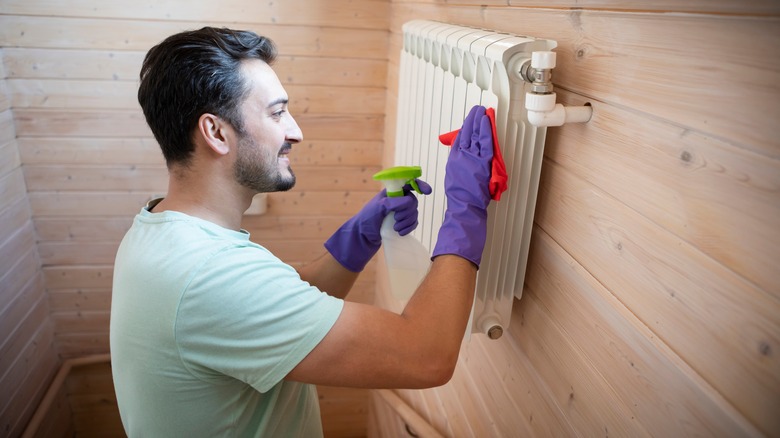How To Use A Radiator (& Crucial Safety Tips To Keep In Mind)
The radiator is an appliance in your home that you might not pay much attention to. As long as it doesn't make any weird sounds and the heat comes on, then you probably assume it's working just fine. However, there is a way to set up your radiator and maintain it so it heats the room at peak efficiency for as long as possible. We spoke with Gelasio Lechuga, a Frontdoor virtual HVAC expert, in an exclusive House Digest interview to get the inside scoop.
According to him, properly cleaning your radiator, getting it serviced, and avoiding dangerous hacks are the best ways to get the most out of it. From the grates to the valves to the cover, using the heater correctly will ensure it operates efficiently and avoids reducing its longevity. Lechuga's tips are simple to follow and worth employing, so you can have peace of mind while staying warm.
What to do and what not to do with your radiator
For optimal use of your radiator, it's best to keep the area clear. Gelasio Lechuga exclusively told House Digest, "As a rule of thumb, leave at least 8 to 10 inches of space for proper air flow and heat radiance transfer." That means you don't want to place furniture or décor too close to the heater, on any side. Another must-do, according to Lechuga, is to "Make sure your radiator's valves are fully open to allow proper flow of water or steam." If you need to turn the valves to adjust the temperature, Lechuga suggests reaching out to a professional for guidance. "You can add water to the humidifier tray for added humidity if your radiator has one," he suggests. "If not, you can place a metal tray on top of the radiator and add water." The water tray will act as a DIY humidifier to release moisture into the air. However, that's the only thing Lechuga recommends placing on top of your radiator.
While it's handy in a pinch, it's not recommended to use your heater as a drying device. "Some people use a radiator to dry clothing, but mold, mildew, and corrosion that results from this process not only affects the radiator's longevity but can also pose health risks for anyone breathing in the air in your home," Lechuga said. This also increases the potential for burnt objects or melted items to stick onto the heater and become a hazard. So, avoid potential damage or the costs to repair a radiator, and just let the heater warm the room.
Your radiator needs routine cleaning and maintenance
To keep your radiator functioning at its prime, routine cleaning and servicing is key. In his exclusive House Digest interview, Gelasio Lechuga advised, "Regularly clean or vacuum the radiator to remove any dirt or debris that can accumulate around the radiator and prevent proper air circulation if left untreated." To safely clean your radiator, ensure the device is off and cool first. Dust all areas including between the grates and inside the cover.
Apart from standard cleaning, it's best to have the system serviced. "Have the boiler inspected every year to make sure the water temperature is set correctly," Lechuga said. Another annual task is bleeding your radiator. "Bleeding a radiator — aka the process of releasing these air pockets — involves turning down the thermostat, locating the bleed valve, and opening it until the hissing sound stops and water begins to leak out," he explained. A buildup of air inside your system can hinder proper circulation and heating. With these tips in mind, you can enjoy a toasty home thanks to a smoothly running radiator.


